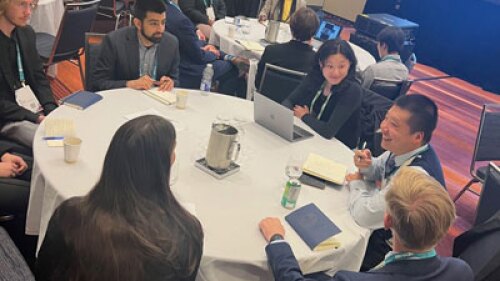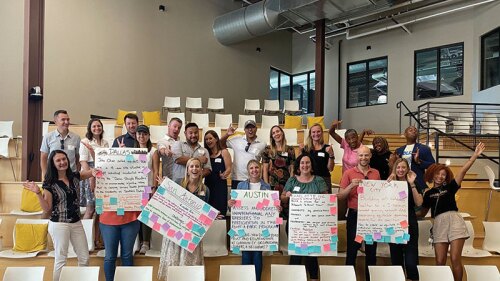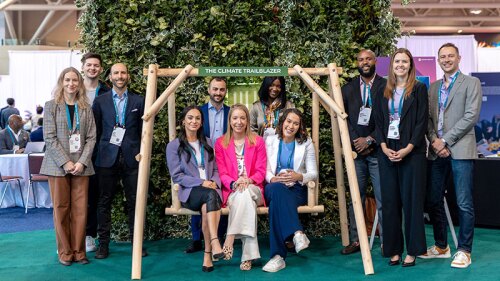In cities across Asia where incomes are rising and land for new homes and highways is becoming scarce, coming up with urban mobility alternatives to the personal car has acquired a particular urgency.
As more people migrate from rural to urban areas and more of them enter the middle class, owning a car has become a rite of passage. An increase in the number of cars means that severe traffic jams like those associated with Beijing and other Asian megacities have become more common. Air pollution, traffic fatalities, and urban sprawl are other negative consequences these cities are contending with as rates of car ownership increase.
Singapore has tried to solve these problems through policies that encourage use of public transportation and limit the number of cars on the road. To purchase and maintain a car in Singapore is prohibitively expensive for a large segment of the population, while a road pricing system, instituted in the 1970s, charges motorists a fee to drive in the central business district and in other high-traffic areas.
Still, because congestion continues to be a serious challenge and land for building new roads is limited, the government is exploring other ways to contain the number of cars in circulation and maximize use of existing road and transportation networks.
Over the past year, the government’s Centre for Liveable Cities has partnered with ULI Singapore to explore what it means to be a “car-lite” city—a city that harnesses the power of technology, the sharing economy, and ground-up innovation to develop a range of mobility options that are “socially inclusive and economically efficient,” according to a recent report of the initiative’s initial findings.
What that report, Creating Liveable Cities through Car-Lite Mobility, proposes is not the elimination of personal vehicles, but expanding choices beyond the car. These include active forms of mobility like walking and cycling; bike sharing, car clubs, ride sharing, and mobility-on-demand services like Uber and Car2Go; new technologies like personal mobility devices and other low-emission vehicles; and more robust public transportation infrastructure that covers the first and last mile of each consumer trip. A paradigm shift—from car-centric to people-centric design—will be required in order for cities to absorb new populations and grow sustainably, the report says.
“How do you get more efficiency out the same number of vehicles? And how do you use right-of-way for alternative modes of transportation so that it easily connects to existing bus and rail infrastructure? These were the questions motivating our research,” said Scott Dunn, vice president for strategy and growth at AECOM and former chairman of ULI Singapore. “Cities in Asia that are already dense to begin with are densifying even more. From a planning perspective, the links to public transit will need to be made much more convenient.”
An electronic version of the report was released in July at the World Cities Summit in Singapore. A more comprehensive print version of the report is to be released at the ULI Fall Meeting in Dallas. “We hope that lessons learned in a Singapore context can be incorporated into ideas for other cities,” Dunn said.
Before the car-lite project, ULI and the Centre for Liveable Cities collaborated on Creating Healthy Places through Active Mobility, which identified strategies and investments Singapore and other tropical cities can pursue to encourage walking and cycling, and Ten Principles for Liveable High-Density Cities. Both the car-lite and active mobility research projects received support from the ULI Foundation in the form of an Urban Innovation Grant.
The car-lite research began with two hands-on workshops in which ULI members and stakeholders—real estate developers, transportation planners, government officials, academics, and technology entrepreneurs—discussed current car-lite initiatives in cities throughout the world as well as progressive policies on parking and urban development that might enable a shift to a less automobile-dependent way of life.
The first workshop provided an overview, and the second, held in the Singapore’s Jurong Lake District (JRD), sought to determine if any of the ideas—from mobility demand–management technology to complete streets—could work in the JRD, which is considered Singapore’s second major central business district. The JRD is undergoing redevelopment as part of the new Singapore–Kuala Lumpur high-speed rail project, and the district will be the terminus.
Gabe Klein, former transportation commissioner for Chicago and Washington, D.C., as well as an entrepreneur in transportation options, led the discussion at the JRD workshop. He suggested that cities take a fearless and experimental approach through partnerships with the private and nonprofit sectors in order to try out new technologies and strategies to support the transition from car dependent to car lite.
“Coming from the startup world, I’m a big fan of experimentation,” said Klein, a former ULI visiting fellow. “These should be controlled experiments which involve putting together plans for quick iteration so that you can execute them over and over in different contexts for different purposes.” The strategies that work can be made permanent, he said.
Creating Liveable Cities through Car-Lite Mobility offers ten ideas for cities that want to become less dependent on cars, including “putting a stop to cheap and easy parking.” Workshop presenter Paul Barter, an adjunct professor at the Lee Kuan Yew School of Public Policy at the National University of Singapore, argued that achieving a car-lite city will be difficult when parking has always been subsidized and artificially cheap.
“Plentiful parking promotes car ownership and driving and is incompatible with a car-lite city,” Barter said. “Yet, Singapore requires parking with every building, based on an outdated fear that a parking shortage means chaos. . . . Modern parking management is the key, enabled by digitally enhanced enforcement and context-responsive pricing.”
As people become more affluent, their desires do not remain static, ULI Singapore member Darren Sabom noted at the initial workshop. “People have been taught to desire cars because in some places there was no previously viable transportation alternative,” he said. “As alternatives develop that make car ownership less convenient than public transit, the desire to own cars will wane.”
Creating Liveable Cities through Car-Lite Mobility identifies ten ideas for less car-dependent cities:
- Align visions, both internally and externally. Inter-organizational silos should be removed to promote a “unifying agenda across all city agencies, reaching beyond transport planning into other essential urban issues like land use, job creation, energy, climate change, health, and social equity,” the report says.
- Focus on people’s needs, work with competition, and find win-win solutions. Consumers are receptive to new, disruptive technologies and are agnostic about who provides the service so long as it is good.
- Create development-based mobility demand–management strategies. These can include initiatives like incentives for public transit use and disincentives for automobile use.
- Expand public transport amenities to cover the first and last mile. Cities can complete the trip ecosystem through intermodal partnerships with taxis and car- and bike-sharing companies.
- Planning matters. Jobs and homes must continue to be brought closer together to minimize stress on roads.
- Put a stop to cheap and easy parking. Parking should be priced more fairly by making pricing fluctuate according to the demand and time of day.
- Turn street design on its head. Multimodal streets should be created and streets should be reprioritized to focus on pedestrians, cyclists, and transit users instead of motorists.
- Use public spaces as common ground for public/private/people collaborations. Community stakeholders should be involved in creating sustainable mobility solutions.
- Drive change through data-driven research and pilots. Low-cost and quickly built projects can make an impact and become permanent.
- Change mind-sets and make car-lite mobility cool. Cities should work with the media and educators to make walking, cycling, and public transit more appealing than car ownership.
Learn more about the ULI–Centre for Liveable Cities partnership at asia.uli.org.




